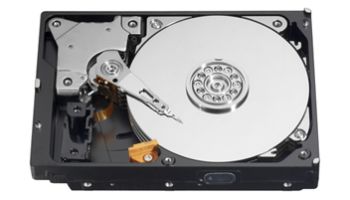Data Grows Apace As We Look At 2010 Storage Trends

The most significant trend continues unabated: the mounting deluge of newly created and duplicated files
Optimisation Is The Keyword
2. Hypervisor-based storage optimisation: Data gets scrambled as if in a blender when it travels from servers through pipelines to a hypervisor and then into storage  containers. Reassembling increasing amounts of data wears heavily on a conventional system because it takes extra time – and ultimately more cost – for unoptimised systems to straighten all the bits out and get them put back together so they can be used.
containers. Reassembling increasing amounts of data wears heavily on a conventional system because it takes extra time – and ultimately more cost – for unoptimised systems to straighten all the bits out and get them put back together so they can be used.
Virsto (the name comes from “virtual storage”) is a newcomer that wants to do for Microsoft Hyper-V-based storage systems what the hypervisor did for servers: Make them more efficient, so they handle workloads faster and in a less-costly fashion.
Quest Software’s Vizioncore vOptimizer Pro also does this very well.
3. Storage pooling: Pooling is an approach to storage virtualisation that delineates specific areas of the storage system to be dedicated to specific data flows to enable more efficient multitenant service deployments, for example.
Virtualised storage systems break files into chunks of data that are dispersed into numerous data centre or storage locations, and reassemble them on demand. Keeping data file chunks closer together in pools is said to provide faster reassembly of file chunks.
Storage pooling can be set up as to disk type, where capacity can be in either 1TB or 2TB drives in separate pools. Users can implement a pool based on WORM [write once, read many] storage technology, or for encrypted data, for example.
Isilon – which specialises in large, clustered systems and was recently bought by EMC – and Sepaton are two of the early vendors shipping smart-pooling storage systems.
4. Tier 1 deduplication: Deduplication, clearly the most in-demand storage feature for the past three to four years, has been used primarily in second-tier SATA-type arrays and not for primary (Tier 1) business-critical data storage. Tier 1 “de-dupe” at the gateway, however, is beginning to get attention as a useful system addition.
 The trend now is for “smart” — or content-aware — storage systems to not even allow data it already knows is redundant into the storage system from the get-go. Tier 1 de-dupe makes a fast determination about whether the document or data bit stays or is left at the door.
The trend now is for “smart” — or content-aware — storage systems to not even allow data it already knows is redundant into the storage system from the get-go. Tier 1 de-dupe makes a fast determination about whether the document or data bit stays or is left at the door.
Data deduplication, one of the most important breakthroughs in IT in the last two decades, eliminates redundant data from a disk storage device in order to lower storage space requirements, which in turn lowers data centre power and cooling costs and lessens the amount of carbon dioxide produced to generate power to run the hardware.
OEM providers Permabit and Nexenta are new-generation storage vendors that are shipping Tier 1 deduplication.
5. Virtualisation of isolated and formerly siloed storage systems: This trend started with testing and quality assurance work back in the mid-2000s but continues to trend up. Many of these siloed systems – especially in larger enterprises – are still in transition, but industry analysts now estimate that some sort of virtualisation is now being used in production in nearly 90 percent of all enterprise IT systems. In 2008 that percentage was in the low 20s.
6. Cloud backup and archival storage: Although some analysts believe cloud backup has to hit a ceiling at some point, this one still shows no signs of levelling off. Small and medium-size businesses, departments of large enterprises, and single consumers alike continue to sign on in increasing numbers to services such as Amazon S3, CommVault, Asigra, iDrive, EMC Mozy, Carbonite, Box.net, Iron Mountain Digital, Seagate i365, Dropbox, SugarSync and others.
Microsoft is offering its SkyDrive, and Google its own Gdrive service in the plans. Amazon S3 is the current market leader in business online storage.
An increasing number of new laptops and netbooks are featuring a pre-install that includes online backup and virus protection. EMC is providing this with its Atmos service for Iomega desktop storage drives.